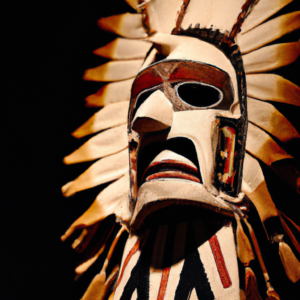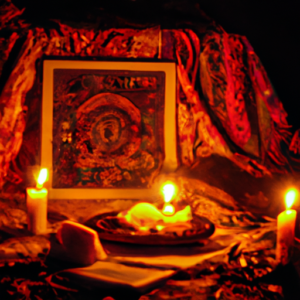– **Stealth Movement: Techniques for Silent Approaches**
Introduction
Stealth movement has long been an essential skill for hunters, warriors, and trackers throughout history. With roots in various cultures and traditions, these techniques allow individuals to approach targets or navigate environments without detection. Among the most respected and effective sources of stealth wisdom are the methods developed by the Apache people.
The Apache, known for their exceptional tracking and hunting abilities, perfected the art of moving silently. Their techniques, honed over generations, emphasize a deep connection with the environment and an acute understanding of natural elements. By studying these principles, modern practitioners can learn to minimize noise and blend seamlessly into their surroundings.
Adopting an Apache-inspired approach to stealth involves not just physical skill but also a mental and spiritual alignment with nature. This holistic philosophy provides insights that go beyond mere technique, encouraging practitioners to develop heightened awareness and respect for the world around them. In this article, we will explore several key techniques and philosophies derived from Apache wisdom that can enhance one’s ability to move undetected.
History
The art of stealth movement has been an integral component of survival and warfare for many cultures throughout history. Among these, the Apache tribe is particularly renowned for their sophisticated and effective techniques. Native American warriors honed their skills through necessity, learning to move silently and undetected in various terrains.
The techniques employed by the Apache were highly advanced and deeply rooted in their connection with nature. They developed a profound understanding of their environment, enabling them to manipulate it to their advantage. This ancient knowledge has been passed down through generations, preserving the core principles of their stealthy approaches.
“Move like the wind and be as invisible as the air.”
This philosophy encapsulates the essence of Apache stealth movement. By focusing on minimizing noise, avoiding visual detection, and using the landscape for concealment, they mastered the ability to approach their targets silently and unseen.
Throughout history, these techniques have influenced modern military training and survival strategies. Elements of Apache stealth movement can be seen in various disciplines, from special forces tactics to wildlife observation. The enduring legacy of these methods highlights their continued relevance and effectiveness.
An Apache story
The Apache people have long been recognized for their unparalleled skills in stealth and survival. Their techniques for moving silently through the landscape were honed over generations, allowing them to navigate vast terrains undetected. Learning from the natural world, they developed a deep understanding of how to blend seamlessly with their environment.
One well-known story tells of a young Apache scout named Chogan, who was tasked with retrieving an important message from a neighboring tribe. As he moved through the dense forest, Chogan employed meticulous techniques taught to him by his elders. He walked toe-first, used the shadows for cover, and avoided stepping on dry leaves or twigs that might betray his presence.
“Move like the wind, leave no trace,” his grandmother had often whispered to him.
The journey was fraught with potential dangers, from rival scouts to wild animals, yet Chogan managed to deliver the message without detection. His success was attributed to the wisdom passed down through generations, demonstrating the effectiveness of Apache stealth techniques. This story encapsulates the essence of moving silently and harmonizing with nature, principles that can be applied to modern stealth practices.
In the heart of the Apache lands, under the pale light of a crescent moon, an elder named Chayton gathered the youth around a crackling fire. His eyes, sharp and wise, reflected the dancing flames as he began his tale.
“Long ago,” Chayton began, “our ancestors were known for their stealth, moving like shadows across the land.”
He pointed towards the distant mountains, their silhouettes looming against the night sky, and continued. “One such warrior was Aponivi, whose steps were as silent as an owl’s wings. His tribe depended on him to move undetected, hunting and gathering information without a trace.”
Chayton’s voice dropped to a whisper, engaging his young audience even more. “Aponivi had learned from the land itself. He knew that stepping on moss made no sound, while dry leaves could betray him.”
Drawing a bow from his side, Chayton mimicked a stealthy approach, his steps light and deliberate, barely nudging the dirt beneath his feet. “He taught himself to walk toe-first, testing each step before committing his full weight.” The children watched intently, their breaths held as though they could hear Aponivi’s ghost moving amongst them.
“One night, while scouting the enemy camp, Aponivi moved like the wind—swift and noiseless. He reached their boundary and saw their guardians dozing off, their spears lazily resting against the earth.”
Chayton paused, his eyes narrowing. “But stealth is not just about silence; it is about patience.” He illustrated with his hand, moving it slowly through the air. “Aponivi waited, holding his breath, his heartbeat slow and even, until he was sure no one would notice him.”
With a smooth gesture, the elder picked up a small stone and rolled it gently into the fire. The children watched the stone disappear into the embers, realizing it had made no sound. “In this way,” Chayton concluded, “we learn not only to move quietly but to blend with the world
Implementing it in your life
Incorporating stealth movement techniques into your daily life requires a mindful approach to how you move and interact with your environment. Begin by cultivating a deep sense of awareness, paying close attention to your surroundings and the sounds you produce. This heightened awareness helps you move gracefully and silently, much like the Apache warriors who perfected the art over generations.
Practice balance and control in every step, focusing on minimizing noise and disruptions. Emphasize soft, deliberate foot placements and maintain a low center of gravity to enhance stability. Over time, these techniques will become second nature, allowing you to navigate through various environments with minimal impact and greater stealth.
- Start by walking barefoot to become more conscious of how your feet make contact with the ground.
- Use the outside edge of your foot to land first, then slowly roll inward to distribute your weight evenly.
- Pace yourself by taking smaller, slower steps to maintain control and reduce noise.
- Focus on breathing quietly and steadily to avoid drawing attention to yourself.
- Wear soft-soled shoes that minimize the sound of your footsteps.
- Practice walking on different surfaces like gravel, grass, and leaves to adapt your movements accordingly.
- Regularly train your peripheral vision to enhance your overall spatial awareness.
Adopting these stealth movement techniques fosters personal growth by instilling a profound sense of mindfulness and presence. As you refine your movements, you become more attuned to your environment and more sensitive to the subtleties of the natural world. This enhanced awareness not only aids in silent movement but also enriches your daily experiences, promoting a deeper connection with the world around you.
Furthermore, integrating these practices into your life can improve your overall physical fitness and mental clarity. By moving attentively and purposefully, you develop better balance, coordination, and concentration, leading to a more grounded and focused approach to various aspects of your life.
Conclusion
In conclusion, mastering the art of stealth movement, as inspired by Apache wisdom, involves a deep understanding of the environment, keen awareness, and disciplined practice. Observing natural surroundings and moving with deliberate intent are crucial techniques. The Apache approach emphasizes patience, adaptability, and respect for nature, which are essential for achieving silent movement.
By integrating these principles, one can enhance their ability to move quietly and unseen. It is important to practice these skills regularly and adapt them to various environments. This enables one to fully harness the profound insights derived from Apache traditions.
We encourage you to apply these techniques in your daily life and appreciate the wisdom that has been passed down through generations. Embrace the journey of continuous learning and improvement. As the Apache proverb says:
“Wisdom sits in places.”
Let the wisdom of stealth movement guide you towards greater harmony with nature and heightened situational awareness.
The image and article have been augmented with AI.
Further Study:
- How do Apache people incorporate spiritual practices into their approach to art and creativity?
- How do Apache spiritual practices influence their approach to conflict and peace?
- How do Apache spiritual practices influence their approach to death and dying?
- How do Apache people incorporate spiritual practices into their approach to sports and physical activities?
- What is the significance of the bow and arrow in Apache spiritual symbolism?
- How do Apache spiritual practices influence their concept of wisdom and knowledge?
- What is the importance of silence and solitude in Apache spiritual practices?
Thank you for reading!







